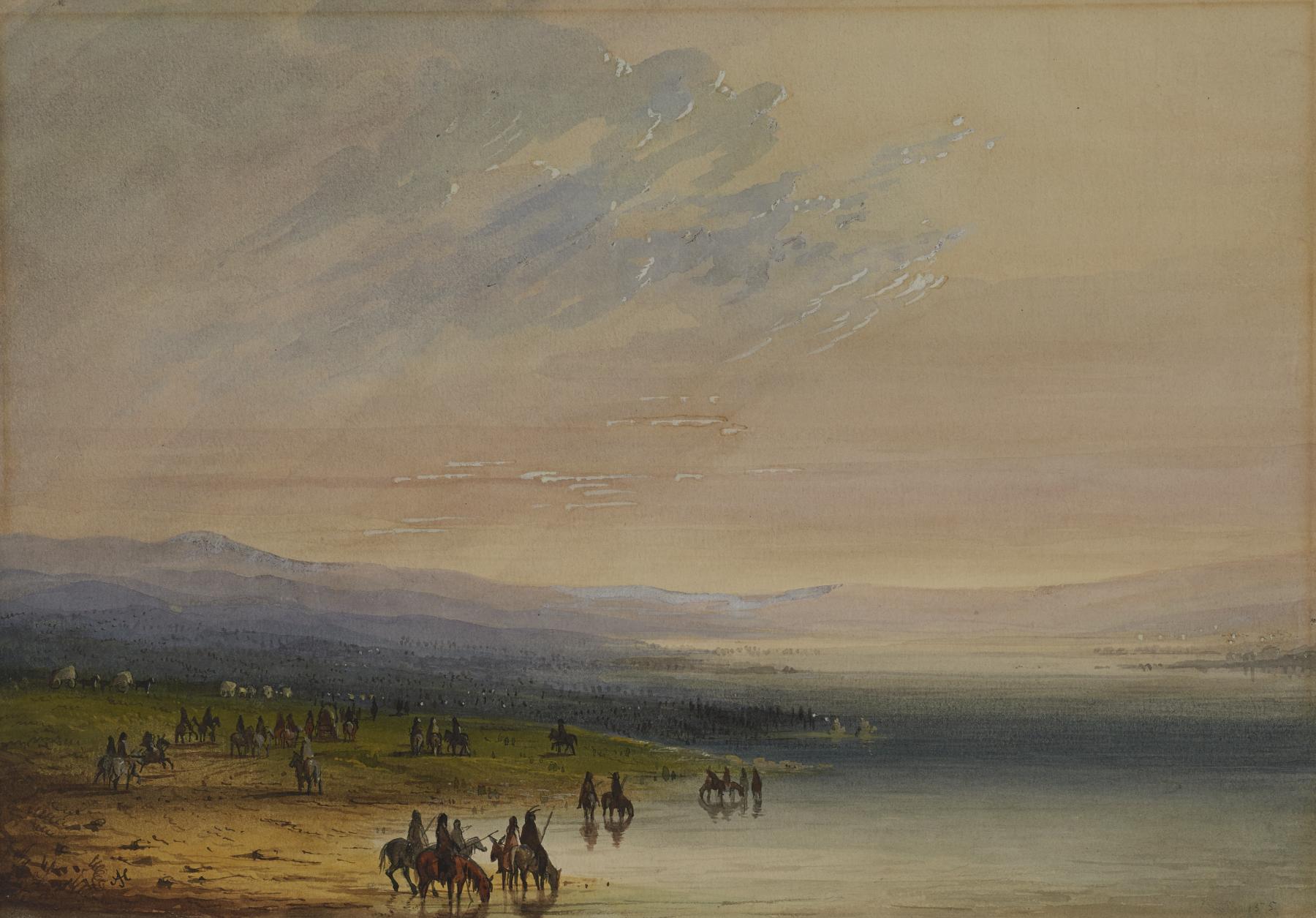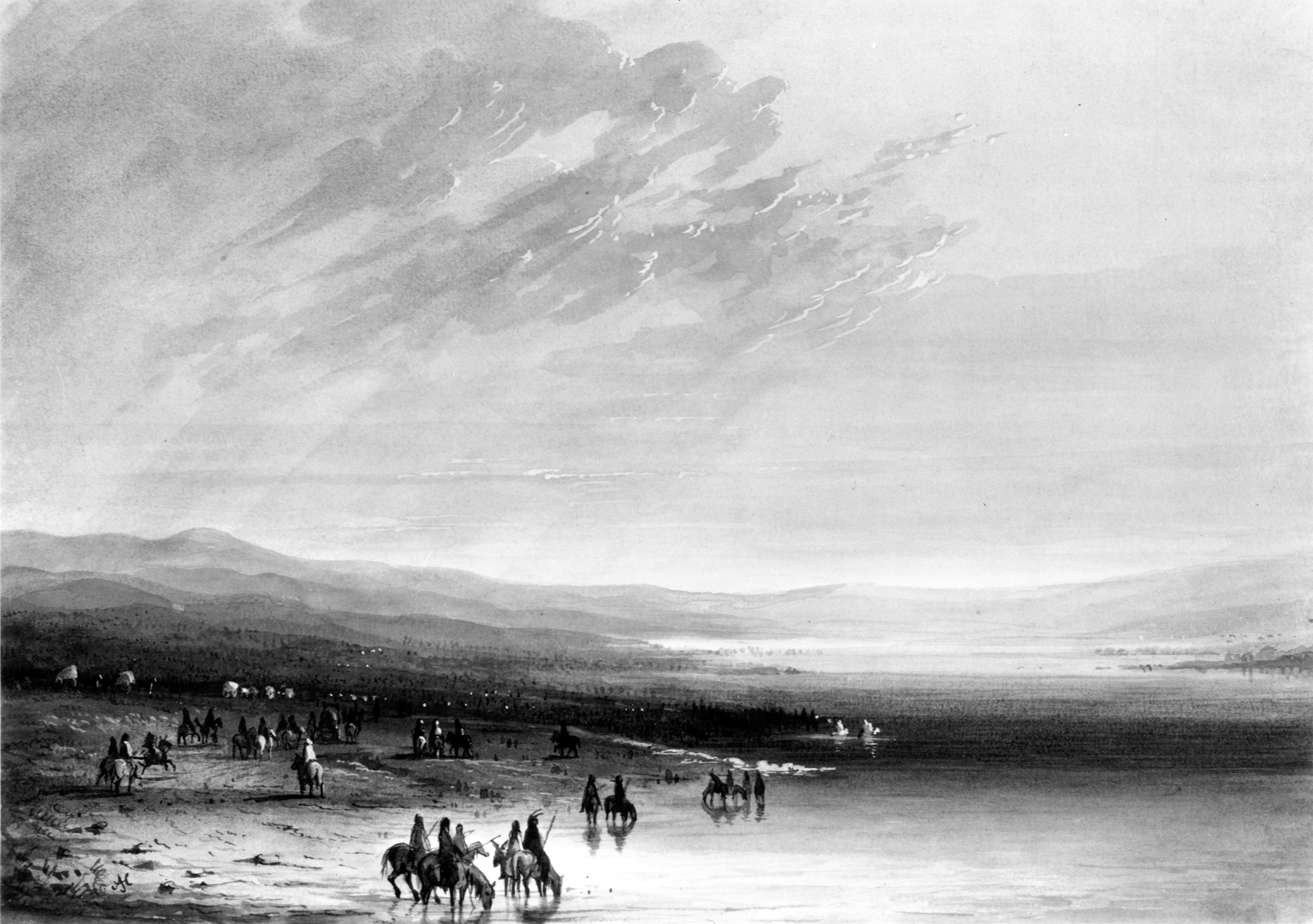Caravan on the Platte
(18th and 19th Centuries )
Extracts from Alfred Jacob Miller’s original text, which accompanied his images of Native Americans, are included below for reference. These words, which shaped how Miller’s contemporaries viewed the watercolors, reveal the racism and sexism embedded in 19th-century exploration and colonization of the western part of what is today the United States.
"While the train pursued 'the even tenor of its way' we usually started out with the hunters in order to get sketches and observe the incidents connected with the chase. Antoine was our preference as he took more pains to carry out our wishes. His aim was so true and his knowledge of the animal's habits so perfect that he could wound a Buffalo in such a manner as to make him stand still for a time. This would give us an opportunity to approach the fiery brute and make drawings,- sometimes A. would urge us to go closer, but on doing so the Buffalo would make a plunge toward us- 'his eye in a fierce phrenzy rolling'- throwing down pencil and paper, a retreat in doubly quick time would be made, at which our fidus Achates would laugh consumedly." A.J. Miller, extracted from "The West of Alfred Jacob Miller" (1837).
In July 1858 William T. Walters commissioned 200 watercolors at twelve dollars apiece from Baltimore born artist Alfred Jacob Miller. These paintings were each accompanied by a descriptive text, and were delivered in installments over the next twenty-one months and ultimately were bound in three albums. Transcriptions of field-sketches drawn during the 1837 expedition that Miller had undertaken to the annual fur-trader's rendezvous in the Green River Valley (in what is now western Wyoming), these watercolors are a unique record of the closing years of the western fur trade.
Inscription
Provenance
Provenance (from the French provenir, 'to come from/forth') is the chronology of the ownership, custody, or location of a historical object. Learn more about provenance at the Walters.
William T. Walters, Baltimore, 1858-1860, by commission; Henry Walters, Baltimore, 1894, by inheritance; Walters Art Museum, 1931, by bequest.
Geographies
USA (Place of Origin)
Measurements
H: 9 1/4 x W: 13 1/4 in. (23.5 x 33.7 cm)
Credit Line
Commissioned by William T. Walters, 1858-1860
Location in Museum
Not on view
Accession Number
In libraries, galleries, museums, and archives, an accession number is a unique identifier assigned to each object in the collection.
In libraries, galleries, museums, and archives, an accession number is a unique identifier assigned to each object in the collection.
37.1940.155







